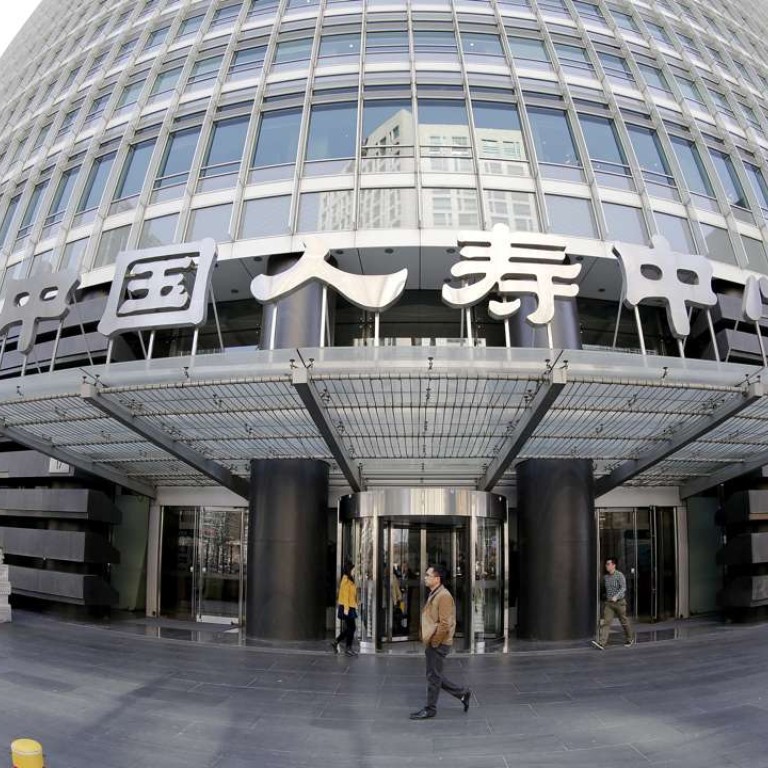
Brace for bad news from Chinese insurers this reporting season
Financial results among major insurers and life insurers for 2016 are expected to be downbeat, however things are looking up for 2017
Chinese insurers are set to publish disappointing earnings for 2016, weighed by depressed investment returns, reserves top-ups, and fierce competition, analysts say.
Ping An is the only major insurer likely to post profit growth for the year, but lacklustre performance is still expected, analysts with CLSA wrote in a research note issued on Sunday. They advised investors to steer clear of the sector, and reiterated their “sell” rating on shares of the major life insurers.
CLSA said that Ping An was also struggling amid weak investment income and reserve top-ups, however its 2016 profits would register growth from the prior year “largely due to a disposal gain from selling Puhui Financial to Lufax”.
To streamline the group’s online financing business, and prepare the unit for an initial public offering, Ping An Insurance in May integrated the micro-financing platform Puhui Financial, as well as institution-focused Shenzhen Qianhai Financial Asset Exchange, or QEX, into Lufax, China’s largest peer-to-peer lending platform, and booked a 9.5 billion yuan (US$1.38 billion) gain.
Lufax is controlled by Ping An Insurance, and may file to list on the Hong Kong market this year, market sources say.
“In our view, Ping An Bank is likely to become a larger drag on Ping An in 2017,” said Leon Qi, head of Greater China financial research with Daiwa, citing the bank’s declining asset quality and capital position as reasons for concern.

The banking business is one of the core business units under the listed entity, aside from insurance and asset management, according to Qi, who has a “hold” rating on the company’s Hong Kong shares.
“Against the backdrop of tighter liquidity and likely regulatory tightening (on off-balance-sheet instruments in particular), Ping An Bank’s relatively unfavourable credit profile (ie, more skewed towards small and medium corporates and less towards retail) is likely to come under pressure due to non-performing loan formation and off-balance-sheet risks,” Qi wrote in a note last week.
Ping An Bank (PAB) reported 2016 net profit of 22.6 billion yuan, 2.5 per cent below the Bloomberg consensus estimate. The result implied fourth quarter net profit declined 5.9 per cent year on year.
Meanwhile, PAB’s asset quality has underperformed its peers, as it non-performing loan ratio rose to 1.74 per cent by end 2016, representing an 18 basis point rise from the prior quarter.
Meanwhile, the property and casualty insurance sector also encountered difficult operating conditions.
CLSA said extreme weather, including massive rainfall and storms in northern China in the second half, incurred large damage claims, particularly in the agricultural sector.
“PICC P&C, with the largest exposure to this business, is set to report a sharp decline in underwriting margin,” the CLSA research note said.
The automotive business units of the major insurers are also expected to disappoint, with analysts anticipating a decline in underwriting profits.
However, some analysts say that insurers are likely to see improving fortunes during 2017.
“Life insurance sector headwinds in 2016 have been turning into tail winds since late 2016,” Qi said. He noted that US President Donald Trump may pressure China towards tighter monetary policies.
“We see less scope for further easing. Or even further, the trajectory of monetary policy could change earlier than current market expectations,” Qi said.
He added that higher interest rates would benefit insurance companies by boosting investment yields.
“The trajectory of market interest rates in China should help prevent further declines in new money investment yield. Ultimately, interest-rate normalisation would likely help normalise their stock valuations relative to the current super-bearish levels,” he wrote.
In another positive development, life insurance products continues to be a driver of new business.
“Fundamentally, we expect continued strong demand for life insurance, particularly protection-type policies, in 2017,” analysts at Bernstein said a research note last month.
Bernstein analysts said protection-type insurance policies remained a “high growth” sector that would continue to do well even as China tightens liquidity and curbs hot money flows into wealth management products. They forecast sales of life insurance products will surge 29 per cent in 2017.
Trading-wise, southbound investment flows have favoured the mainland banking and insurance players since last year.
China Life and China Pacific Insurance Company emerged as February’s top 10 traded stocks through the Shanghai-Hong Kong Stock Connect, according to Hong Kong Exchanges and Clearing.
Apart from the yield outlook, mainland investors also look at the valuation difference between the mainland and Hong Kong market.
“For banks, the gap has narrowed to a single-digit percentage whereas for life insurers such as China Life it’s still over 15 per cent,” CLSA said.

